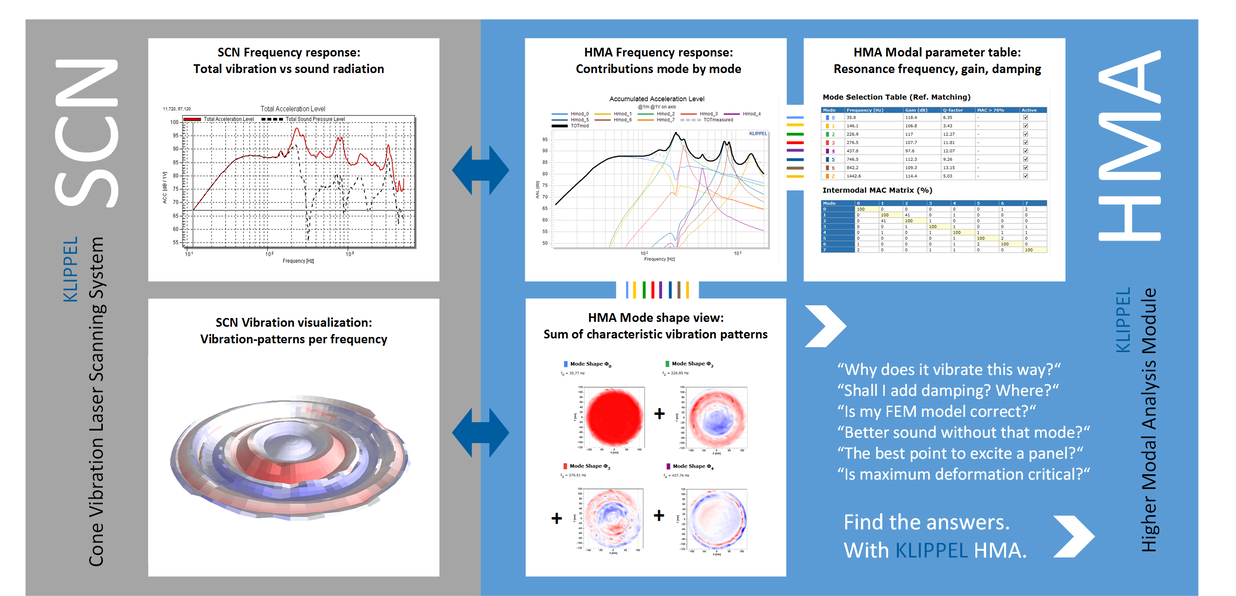Higher Modal Analysis (HMA)
Features and Benefits
- Improve cone geometry design
- Study characteristic vibration-modes separately:
find the root-cause - Study mode-interaction: solve sound radiation problems
- Animated material deformation (~stress) view:
find sources of nonlinear distortion - Extracts modal parameters
(e.g. damping, resonance frequencies, mode shapes)
Modal analysis is an optimal method for in-depth-analysis of vibrating loudspeaker cones. The HMA module automatically decomposes the complex scanned vibration data into a set of second order resonators with associated mode-shapes (characteristic vibration-patterns). Studying the properties of these resonators (modal parameters resonance frequency, damping and gain) is highly valuable for the assessment of the mechano-acoustical performance. An even more detailed insight on how changes in the modal parameters influence the total response can be gained by studying the modal expansion, i. e. the identified set of transfer functions and mode shapes. The HMA allows including or excluding sets of modes from the accumulated expansion to study these effects. It is designed to integrate smoothly with measurements of the Klippel Vibration Scanning System (SCN). Data import from Polytec LDV devices are possible through additional optional bridge-module (POLY2SCN).
Specification
Requirements
Hardware
• KLIPPEL Analyzer 3
USB Dongle
Software
• dB-Lab
Module
• Linear Parameter Measurement (LPM)
• Scanning Vibrometer System (SCN):
• or bridge product like POLY2SCN
Related Information
Other Modules of the R&D System
• Rocking Mode Analysis (RMA):
Detection of the root-cause of rocking in microspeakers and other transducers (inhomogeneous stiffness, mass
or B-field distribution)
Standards
International Electrotechnical Commission
IEC 60268-22

